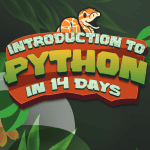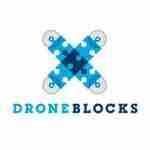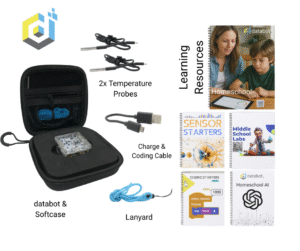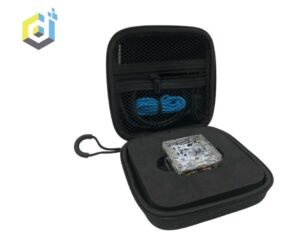ML Table of Contents
Machine Learning with databot
Table of Contents
Section 1: Overview
Dive into the fundamentals of machine learning with our comprehensive introduction. From basic concepts to practical examples like the Titanic dataset, this section includes 8 videos that set the stage for your journey. Learn to use essential tools like Pandas, and get your databot ready for action.
- Machine Learning Introduction (18:46)
- Machine Learning Overview (18:37)
- Machine Learning Basics (12:51)
- ML Example: Titanic Dataset (33:12)
- Pandas Introduction (19:49)
- Source Code and Software Installation (15:38)
- 8 Bit Car Example (28:43)
- databot Overview (32:33)
Section 2: Vibration
Explore the fascinating world of vibration prediction. This section guides you through a step-by-step process, from understanding vibrations to making accurate predictions. With ten detailed lessons, you’ll gain hands-on experience in data analysis and model training.
- Vibration Prediction - Part 1 (6:24)
- Vibration Prediction - Part 2 (3:53)
- Vibration Prediction - Part 3 (4:26)
- Vibration Prediction - Part 4 (16:34)
- Vibration Prediction - Part 5 (8:35)
- Vibration Prediction - Part 6 (8:07)
- Vibration Prediction - Part 7 (4:43)
- Vibration Prediction - Part 8 (2:10)
- Vibration Prediction - Part 9 (3:44)
- Vibration Prediction - Part 10 (7:05)
Section 3: Rotation Prediction
Master the art of rotation prediction with this in-depth section. Starting with data collection and visualization, you’ll progress through exploratory data analysis and model training. By the end, you’ll test and refine your models, achieving reliable results.
- Introduction (3:09)
- Project Updates (3:29)
- Code Update (4:57)
- Environment Setup (4:56)
- Data Collection and Visualization (26:25)
- Exploratory Data Analysis (14:15)
- Data Preparation (7:23)
- Model Training (6:18)
- Testing the Model (18:59)
- Wrap Up (5:25)
Section 4: databot Dashboard - Bonus Section
Enhance your projects with the databot Dashboard. This bonus section introduces you to powerful visualization tools and practical examples. See the dashboard in action and learn how to integrate it into your machine learning projects for a polished presentation.
- Introduction (5:34)
- Code Download (4:19)
- Examples (11:57)
- Dashboard in Action (13:56)
Section 5: OpenAI databot Chat Assistant - Bonus Section
Create your own AI chat assistant using OpenAI and databot. This section walks you through the setup, coding, and implementation of a chat application. With detailed lessons and hands-on projects, you’ll bring your AI ideas to life.
- Section Introduction (3:26)
- Open AI Introduction (8:32)
- Open AI Message Flow (4:05)
- Code Download and Setup (8:45)
- Open AI Assistant - Part 1 (16:17)
- Open AI Assistant - Part 2 (10:48)
- Open AI Assistant - Part 3 (28:55)
- Open AI Assistant - Part 4 (10:18)
- Streamlit Chat Application (19:37)
Machine Learning with databot
Table of Contents
Section 1: Overview
Dive into the fundamentals of machine learning with our comprehensive introduction. From basic concepts to practical examples like the Titanic dataset, this section includes 8 videos that set the stage for your journey. Learn to use essential tools like Pandas, and get your databot ready for action.
- Machine Learning Introduction (18:46)
- Machine Learning Overview (18:37)
- Machine Learning Basics (12:51)
- ML Example: Titanic Dataset (33:12)
- Pandas Introduction (19:49)
- Source Code and Software Installation (15:38)
- 8 Bit Car Example (28:43)
- databot Overview (32:33)
Section 2: Vibration
Explore the fascinating world of vibration prediction. This section guides you through a step-by-step process, from understanding vibrations to making accurate predictions. With ten detailed lessons, you’ll gain hands-on experience in data analysis and model training.
- Vibration Prediction - Part 1 (6:24)
- Vibration Prediction - Part 2 (3:53)
- Vibration Prediction - Part 3 (4:26)
- Vibration Prediction - Part 4 (16:34)
- Vibration Prediction - Part 5 (8:35)
- Vibration Prediction - Part 6 (8:07)
- Vibration Prediction - Part 7 (4:43)
- Vibration Prediction - Part 8 (2:10)
- Vibration Prediction - Part 9 (3:44)
- Vibration Prediction - Part 10 (7:05)
Section 3: Rotation Prediction
Master the art of rotation prediction with this in-depth section. Starting with data collection and visualization, you’ll progress through exploratory data analysis and model training. By the end, you’ll test and refine your models, achieving reliable results.
- Introduction (3:09)
- Project Updates (3:29)
- Code Update (4:57)
- Environment Setup (4:56)
- Data Collection and Visualization (26:25)
- Exploratory Data Analysis (14:15)
- Data Preparation (7:23)
- Model Training (6:18)
- Testing the Model (18:59)
- Wrap Up (5:25)
Section 4: databot Dashboard - Bonus Section
Enhance your projects with the databot Dashboard. This bonus section introduces you to powerful visualization tools and practical examples. See the dashboard in action and learn how to integrate it into your machine learning projects for a polished presentation.
- Introduction (5:34)
- Code Download (4:19)
- Examples (11:57)
- Dashboard in Action (13:56)
Section 5: OpenAI databot Chat Assistant - Bonus Section
Create your own AI chat assistant using OpenAI and databot. This section walks you through the setup, coding, and implementation of a chat application. With detailed lessons and hands-on projects, you’ll bring your AI ideas to life.
- Section Introduction (3:26)
- Open AI Introduction (8:32)
- Open AI Message Flow (4:05)
- Code Download and Setup (8:45)
- Open AI Assistant - Part 1 (16:17)
- Open AI Assistant - Part 2 (10:48)
- Open AI Assistant - Part 3 (28:55)
- Open AI Assistant - Part 4 (10:18)
- Streamlit Chat Application (19:37)


 Python in 14 Days
Python in 14 Days In addition to the Machine Learning with databot and Python in 14 Days courses, the DroneBlocks Enterprise License includes access to all curriculum titles listed below which includes over 200 lessons on Block, Python, Open-CV, and Javascript Coding. Your license also provides access to unlimited technical support on these courses, access to the DroneBlocks drone coding simulator for UNLIMITED students, and a complete Part 107 training for students interested in pursuing a commercial drone pilot license.
In addition to the Machine Learning with databot and Python in 14 Days courses, the DroneBlocks Enterprise License includes access to all curriculum titles listed below which includes over 200 lessons on Block, Python, Open-CV, and Javascript Coding. Your license also provides access to unlimited technical support on these courses, access to the DroneBlocks drone coding simulator for UNLIMITED students, and a complete Part 107 training for students interested in pursuing a commercial drone pilot license.

